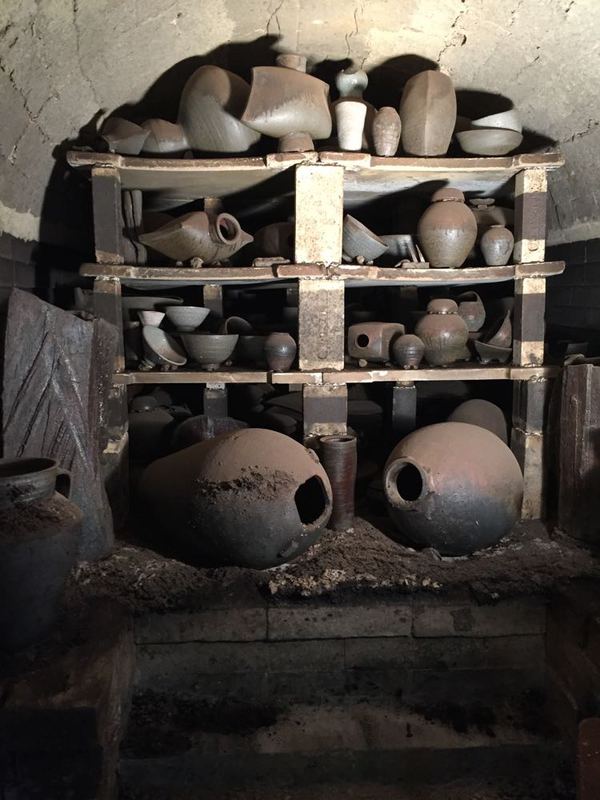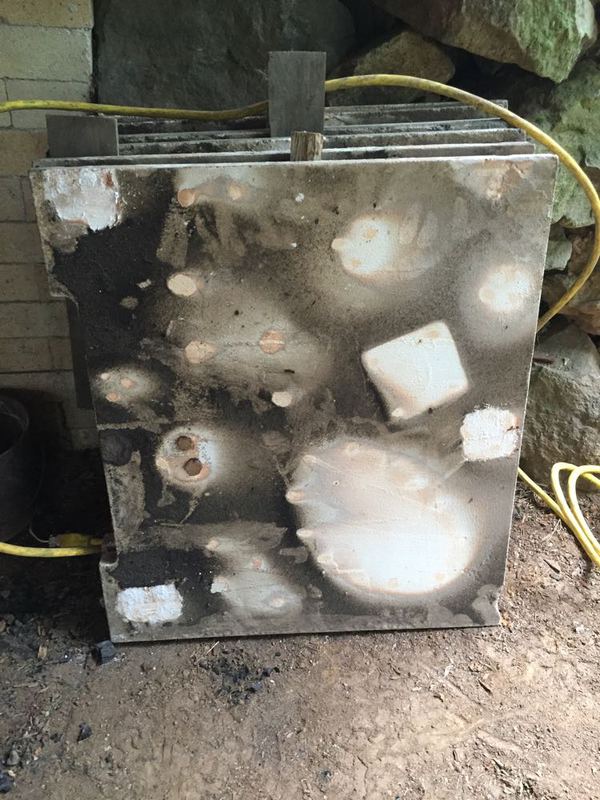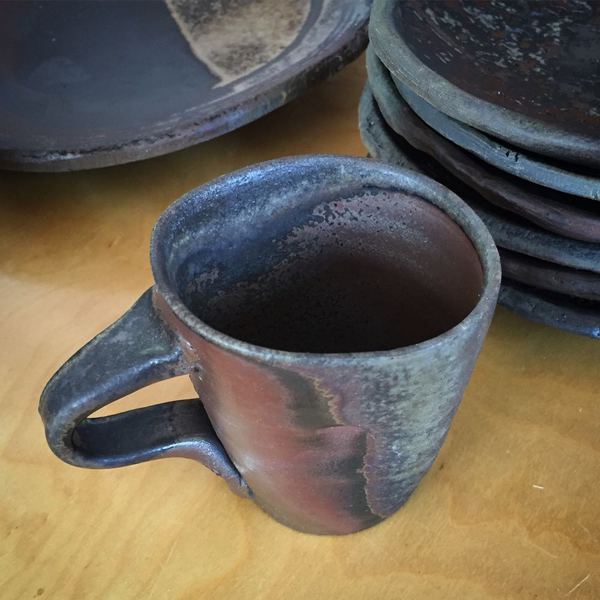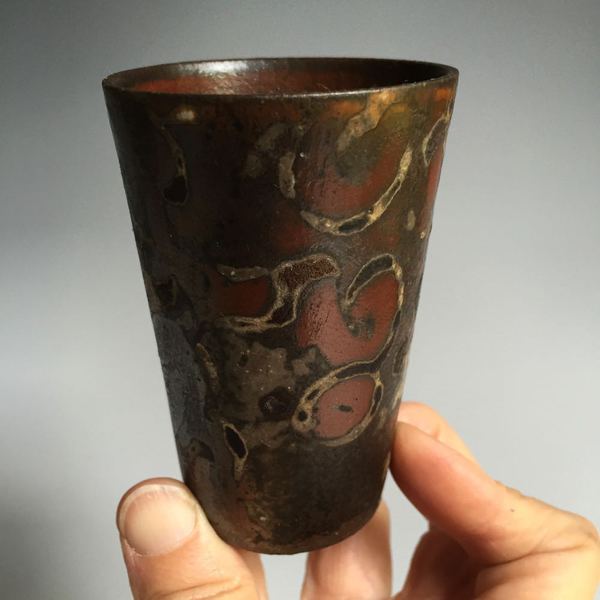 We unstacked our wood kiln a month ago. There is so much anticipation of the transformation from ideas in the wet state, to assumptions stacked in the kiln, to fired results. Now we finally get to see and hold the objects. There is much to parse as we study the pots. Nuances are mentally backtracked to process variations. We had a new source of wood this firing, many clay tests, salt-impregnated shells for stacking large pots, and on ending the firing a back stoke hole filled with rained upon embers/charcoal from prior firings.
We unstacked our wood kiln a month ago. There is so much anticipation of the transformation from ideas in the wet state, to assumptions stacked in the kiln, to fired results. Now we finally get to see and hold the objects. There is much to parse as we study the pots. Nuances are mentally backtracked to process variations. We had a new source of wood this firing, many clay tests, salt-impregnated shells for stacking large pots, and on ending the firing a back stoke hole filled with rained upon embers/charcoal from prior firings. At first when the door is unbricked, the pieces, covered in ash, look grey and dusty. We rinse them off and then sand them a bit, grinding off whatever bits have become attached.
At first when the door is unbricked, the pieces, covered in ash, look grey and dusty. We rinse them off and then sand them a bit, grinding off whatever bits have become attached. I always tell people that it is a long progression to clean and sort these pots. For each kiln load there are upwards of 400 pieces from saki cups to large jars. Every time I go through the steps of cleaning and assessing it surprises me how emotional and time consuming it is.
I always tell people that it is a long progression to clean and sort these pots. For each kiln load there are upwards of 400 pieces from saki cups to large jars. Every time I go through the steps of cleaning and assessing it surprises me how emotional and time consuming it is. There are a variety of mental states. There is the initial discovery with some reassurance, some disappointment, and the evaporation of a few dreams. There are other stages of appreciation as we read the qualities of fused ash, fired clay, scorch marks and the distortions of form which are all a part of this collaborative language of expression.
There are a variety of mental states. There is the initial discovery with some reassurance, some disappointment, and the evaporation of a few dreams. There are other stages of appreciation as we read the qualities of fused ash, fired clay, scorch marks and the distortions of form which are all a part of this collaborative language of expression. Rob Barnard has insightfully written:
Rob Barnard has insightfully written:[from: Woodfiring--Challenge or Refuge"When I first began making woodfired work my teacher, Yagi Kazuo, warned me that if I couldn't use bland commercial clay and glazes and an electric kiln to make interesting pottery then I had no business fooling around with something as difficult and challenging as woodfiring. Of course, he wasn't talking about the technical side of woodfiring--the ability to fire a kiln and achieve certain dramatic effects. By difficult he meant the ability to discern real artistic achievement from the kind of accidental and random transformation that occurs when clay is subjected to the intense atmosphere and temperature of a woodfired kiln. He recognized the seductive nature of the process and the appeal of scorched clay and brilliant runny glaze and he cautioned me against letting that become the main force behind the work I made. Woodfiring, he felt, could become a crutch and hinder the growth and development of a potter by giving him or her the illusion of success when in fact that so-called "success" was entirely the result of the fortuitous interaction of natural elements like fire and clay. To him art was not about the physical structure of a work, but rather the artist's spiritual struggle that supports that structure."
Ceramics: Art &Perception, No. 23]
